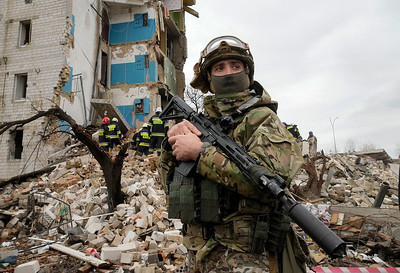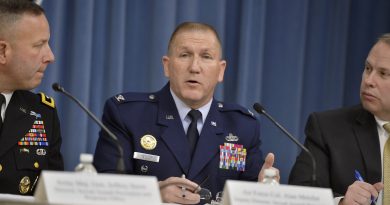Ukraine’s New Approach
Cameron Bird
Staff Writer
With the second anniversary of Russia’s invasion of Ukraine approaching, much of the world’s media attention has gradually shifted away from the sharp focus it had placed on Ukraine since February 24, 2022. This can be attributed to various other global events, such as Hamas’ attack on Israel in October of 2023, or the gauntlet of elections occurring throughout the 2024 calendar year. The combination of these factors, and the predictable media fatigue that parallels a drawn-out military conflict, has led to the Ukraine war falling to the backdrop of global political focus.
This fatigue has been reflected in the distribution of aid packages to Ukraine. The U.S. Congress has shown increasing hesitance in continuing such aid, despite warnings of the implications it could have on Ukraine’s war effort, as reported by NBC News. As the United States determines how supportive it wants to be of the Ukrainian war effort, analysts say Ukraine could face massive vulnerabilities in the absence of U.S. military ammunition and logistical support. With these dynamics at play, as well as the fact that there has been no significant change in territorial control since the summer of 2023, it appears Ukraine faces the prospect of being more on its own than ever heading into 2024.
Despite this daunting prospect, Ukraine has remained firm and clear with both its planning and its resolve. President Volodymir Zelenskyy has consistently articulated that Ukrainian values related to their territorial integrity and desire to protect their homeland are key motivators and contribute to their effort on the war front, yet the tangibility of that effort comes into question when other more important tangibles begin to dissipate. If aid from allies is to decrease or even entirely disappear, Ukraine would become extremely vulnerable not just on the main fronts in the southeast, but across its entire border.
Ukraine’s much-anticipated counter-offensive movement in the summer of 2023 did not produce the expected results in terms of territorial control, and produced heavy Ukrainian losses against well-fortified Russian defenses, as reported by the Council on Foreign Relations. No significant change in momentum, combined with decreasing aid from allies, has pressed the need for a change in strategy that is both sustainable and feasible. The Financial Times reports that Ukraine plans on engaging in ‘active defense’ with the hope of preparing for further counter offensives later in the year or in 2025, as Russian defenses continue to be strained by willpower and resources. This proposed strategy places an emphasis on maintaining key lines of defense Ukraine already holds while attacking potentially weak links within the Russian line of defense.
This strategy has already begun, with the latest example being the town of Avdiivka. Avdiivka has been the focal point of a months-long assault by Russia that echoes the terrors of Bakhmut earlier in the war. Unlike Bakhmut, however, there is much more strategic importance to Avdiivka, and Western analysts have grown increasingly worried about it falling into Russian hands, reports Newsweek.
Avdiivka could become a microcosm of the war effort on both sides and test the capacity with which Ukraine’s new strategy can succeed in the long run. If Ukraine cannot fend off this assault, Russian momentum could increase, and Ukraine could find itself scrambling between an all-out defensive strategy and that of ‘active defense.’ If this strategy proves to be nothing more than a placeholder before Ukraine begins another major counter-offensive, major risks in terms of manpower and territory could take place.
Ukraine still faces a massive humanitarian crisis, displacement problem, and the continuous bombardment of Ukrainian cities by Russian missiles, with one of the latest waves claiming 18 lives, according to BBC News. As the conflict continues to move forward, and lives continue to be lost, Ukraine must face a myriad of issues related to its political and military stamina in defending against Russian aggression. With aid potentially sputtering to a halt, and Ukraine’s counter-offensives not obtaining the desired results, President Zelenskyy and Ukrainian military command must get even more creative in dealing with continued Russian assaults. Perhaps even more relevant will be the degree to which the international community remains invested in the conflict as it descends into more and more of a stalemate.
Image courtesy of Flickr


